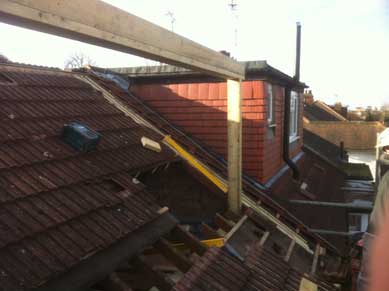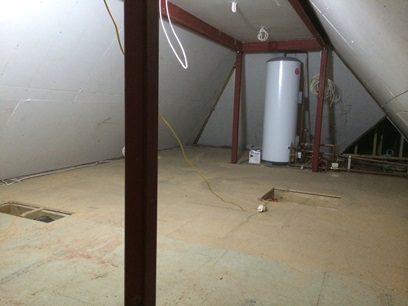Planning your loft conversion may be a daunting task. Not to worry, this article covers everything you need to know about loft conversions.
Why Have a Loft Conversion?
Some homeowners dream of more space. This can either be achieved by moving house, building an extension, or carrying out a loft conversion. Most of the time loft conversions are the most cost effective method. They turn unused roof space into useable rooms such as an office, bedroom, playroom, and more. Loft conversions are a popular way of improving a home in the UK, thanks to its numerous advantages.
Loft conversions can increase your property value by up to 20%. Therefore any money you invest into your conversion is usually returned once you sell. Most of the time homeowners profit from a loft conversion.

Can your Loft be Converted?
The first stage in planning your loft conversion is to determine how it can be converted. The internal height of a loft is a good indicator to see if its suitable for a conversion. Another thing to consider is the overall floor space you have to play with.
It is best to seek professional help when planning your loft conversion from an architect, builder or specialist loft conversion company.

Types of Loft Conversion:
While there are numerous types of loft conversion, only two are most common. They include the following:
Roof Window Conversion
Roof windows are the best option for most homeowners because they have the capability to fit into the line of roof without the need to restructure it. Individuals who install these windows receive a considerable amount of light within their loft space.
In the United Kingdom, homeowners don’t require planning permission to install the roof windows. They can be accomplished under permitted development rights. The building regulation approval is, however, essential.

Dormer loft conversion
This is an extension to the existing roof, which usually projects vertically from the sloping roof. It is useful in creating additional headroom and floor space within the property. A dormer boasts a horizontal ceiling and vertical walls in the inside. Many homeowners like this type of loft conversion as it adds the maximum amount of extra space.
Other Types of Loft Conversions
Apart from the dormer and the roof window conversions, other types are less common. These include the mansard and hip to gable conversions. These two have basic requirements to suffice their installation, which is why they’re uncommon.
Uses of a Loft Conversion:
There are many different ways of using a loft room. For instance, you can use it to create a playroom for your kids. You can also make your loft soundproofed so you get absolute peace and quiet. The loft is soundproofed by fitting its walls with soundproof board.
In addition to creating a playroom, you can virtually create anything you want with your loft, including a hobby room. The extra space affords you the capability to create your very own hobby room, allowing you to have the utmost comfort in doing what you like. If you are thinking about having a bathroom installed you need to consider how the existing plumbing will connect to it. Your boiler may also need to be upgraded if it cannot supply water to the extra radiators and bathroom effectively

How to Make Loft Conversion Blend in With a House:
Add some color
Lofts are positioned at the top of your house, and therefore contains many angles as well as slanting lines. Nevertheless, instead of cursing these seemingly awkward slopes, it’s better to endorse them. This can be achieved by picking out rafters in a bright color. This attracts the eye and adds a splash of fun.
Light the heights
You can also celebrate the exceptional architectural design of your loft room by adding clever lighting. For instance, you can lower the lights to the apex of the roof to visually pull the bedroom’s ceiling down. This could make it appear as if it’s connected with the entire space.
Open it up
Your properties highest point has its advantages, the elevated position flaunts fantastic views. An open plan could make full use of your loft space.
Stair Design
Stairs can be a big problem with loft conversions. The location of your stairs need to look natural and not be intrusive to the original design of the house. There are also important regulations to adhere to such as the minimum 2m head clearance under and above the stairs.

Overall Summary:
- Get your loft space assessed to see if a loft conversion would be possible.
- Draw some plans on how you want to use the space.
- Find some trusted companies that can do your loft conversion. Get at least three quotes.
- Consider planning permission, party wall and building regulation requirements of your loft conversion.
- Examine any disadvantages your loft conversion may have. If you spot any then try your best to resolve them.
- Start your loft conversion.

